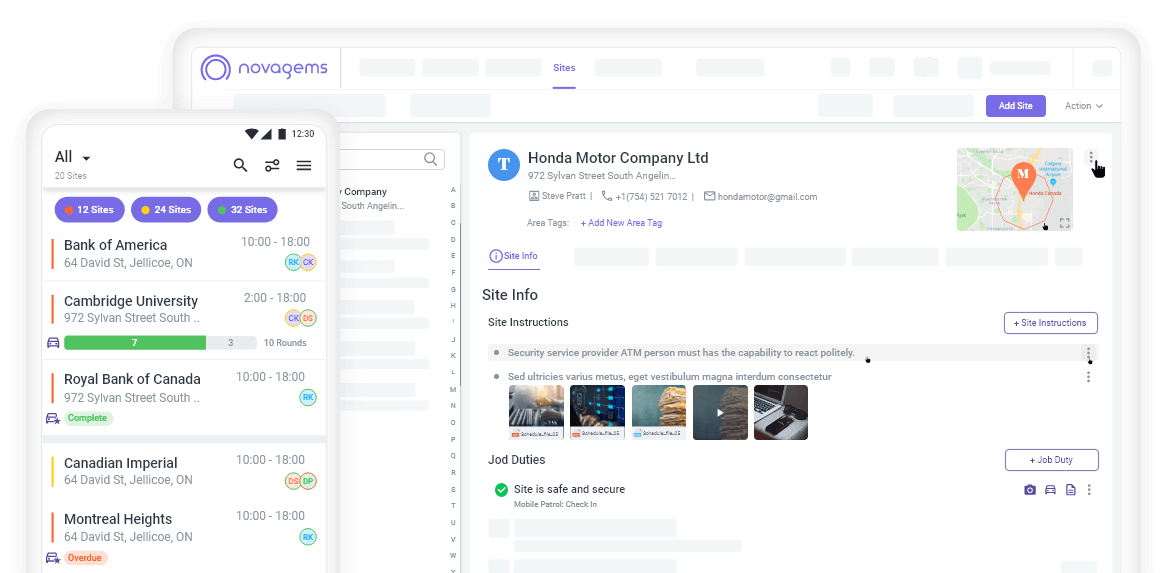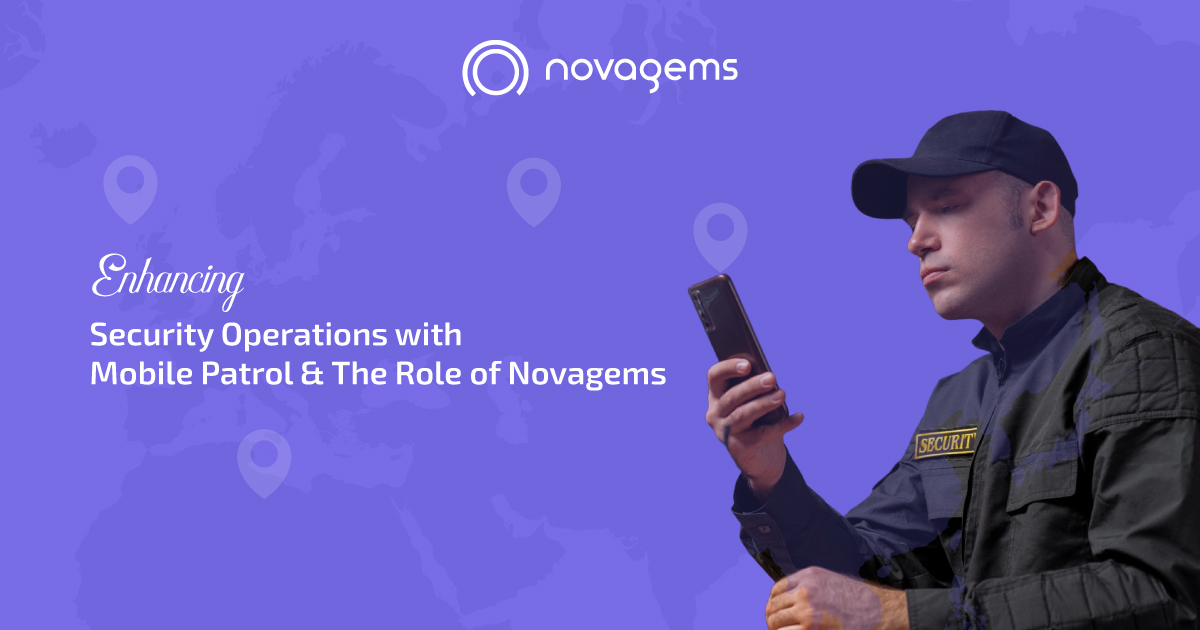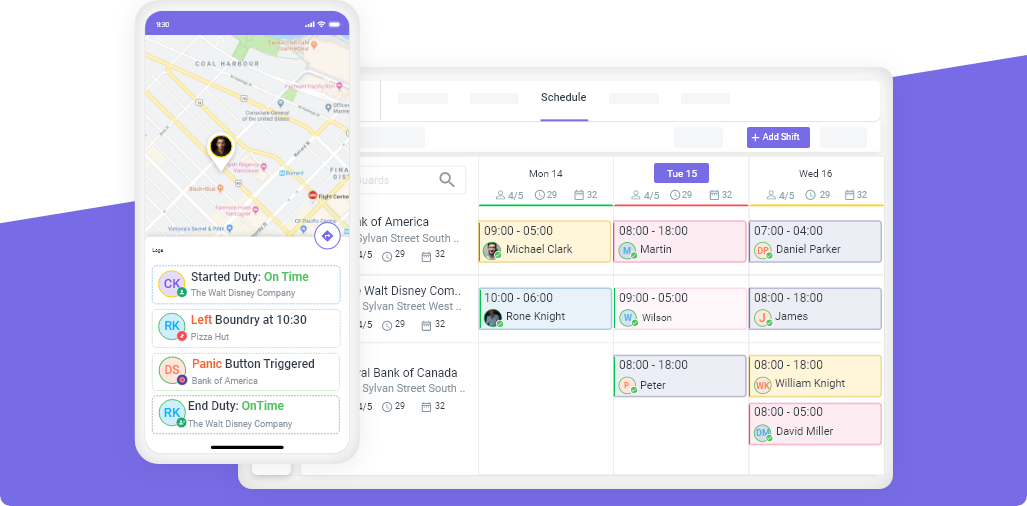10 Common Employee Scheduling Issues and Solutions
Tue, Jul 29, 2025
Read in 10 minutes
These are some of the most common employee scheduling issues that companies face. We have a solution that will help you avoid them with effective employee scheduling software.

Key takeaways
- Scheduling software solves common shift issues like no-shows, double-booking, and availability conflicts.
- Fair and transparent schedules improve employee satisfaction and reduce burnout.
- Automation saves time, cuts costs, and ensures accurate payroll and staffing.
- Novagems offers real-time, mobile, and data-driven workforce scheduling solutions.
What do we know about Staff Scheduling?
Staff scheduling is a crucial task in any business that relies on employees to deliver services or products. It involves planning and organizing shifts to ensure that the right number of employees are working at the right time to meet business demands. Good employee scheduling helps a business run smoothly, cuts costs, and ensures that customers are served promptly.
However, staff scheduling is not always straightforward. Without the right tools and systems, it can lead to confusion, errors, and increased stress for managers. As businesses grow, managing employee schedules becomes more complex. That’s where staff scheduling software comes in. Using employee scheduling software, businesses can easily create, manage, and adjust schedules while reducing common problems that arise from manual scheduling.
In this blog, we will explore 10 common employee scheduling problems and provide practical solutions that businesses can implement using shift scheduling software and staff scheduling tools.
Employee Scheduling Issues
1. Shift Availability
Problem: Managing shift availability is a major challenge for many businesses. Employees may have different schedules, personal commitments, or other jobs that prevent them from working certain shifts. For instance, one employee may prefer morning shifts, while another may only be available in the evenings. When employees have last-minute changes to their availability, it can leave managers scrambling to find replacements, especially during peak times.
Solution:
- Use employee scheduling software that allows employees to easily update their availability in real-time. This helps managers view who is available and when, reducing the chance of scheduling conflicts.
- Employees can also request time off in advance, allowing managers to plan around these requests well ahead of time.
- Many scheduling tools allow employees to mark their preferred shifts. And software can take these preferences into account when assigning shifts.
2. Shortage of Employees
Problem: A shortage of employees can happen for a number of reasons. Whether it’s due to sick days, vacations, or employees leaving the company unexpectedly. This can be especially problematic when the business has high demand or critical shifts that must be covered.
Solution:
- Scheduling software can help businesses plan for staffing shortages by allowing managers to quickly find temporary or part-time workers to fill open shifts.
- Build a list of backup workers or on-call staff who are available to step in during busy times.
- Use shift scheduling software that automatically alerts managers when there are gaps in the schedule, making it easier to find coverage quickly. The software can also identify shifts that need immediate attention and help managers allocate workers to those slots.
3. Manual Employee Scheduling is Time-Consuming
Problem: Many businesses still rely on manual methods, such as spreadsheets or paper systems, to create employee schedules. This process can be very time-consuming and prone to errors. For example, manually entering shifts into a spreadsheet can lead to double-booking, forgotten shifts, or confusion about shift times.
Solution:
- Employee scheduling software automates the process, allowing managers to create schedules quickly and with fewer errors. This saves a lot of time and reduces the workload for managers.
- The software can automatically update schedules when changes are made, so everyone has the latest version of the schedule. This means there’s no need for employees to keep checking with the manager to confirm their shifts.
- Some tools even allow for easy drag-and-drop scheduling, which further simplifies the process.
4. Last-Minute No-Shows
Problem: One of the most frustrating challenges of staff scheduling is when employees don’t show up for their shifts at the last minute. This can cause a ripple effect that disrupts the workflow, leaves businesses short-staffed, and may require managers to scramble to find replacements.
Solution:
- Shift scheduling software sends automatic reminders to employees about their upcoming shifts. This reduces the likelihood of employees forgetting about their shifts or showing up late.
- Many scheduling systems also allow employees to confirm or decline shifts in advance, which gives managers a clearer picture of who will be working on a particular day.
- For emergencies, the software often allows employees to swap shifts with others easily, ensuring that shifts are still covered even when someone is unavailable.
5. Communicating the Schedule
Problem: Poor communication about the schedule can lead to missed shifts or confusion. Employees may not know when their shifts are, especially if the schedule is not shared clearly or often changes at the last minute.
Solution:
- Staff scheduling software offers a central platform where employees can view their schedules at any time. This allows employees to check their shifts without needing to contact the manager for confirmation.
- Scheduling software sends automatic notifications whenever there is a change to the schedule. Whether it’s a shift swap, time-off approval, or a schedule change, employees will be notified instantly.
- With cloud-based scheduling tools, employees can access their schedules from anywhere, whether through mobile apps or the web.
6. Unequal Shift Distribution
Problem: Sometimes, employees end up with too many shifts, while others are given fewer hours than they need. This can lead to burnout for employees who are overworked and dissatisfaction for those who are underworked. Over time, this can create frustration and a sense of unfairness among the staff.
Solution:
- The software can help balance shift distribution by automatically rotating shifts or distributing hours more evenly among employees.
- The software can be configured to assign shifts based on the availability and preferences of employees, while also ensuring that the workload is shared fairly.
- Regularly rotating shifts helps ensure that no one is always working the night shift or weekend shifts, which can lead to dissatisfaction.
7. Scheduling Errors
Problem: Scheduling errors, such as double-booking employees or assigning employees to the wrong shifts, can cause major disruptions in business operations. These errors can also lead to employee frustration, especially when they are told to work during times they are not available.
Solution:
- Shift scheduling software reduces the chance of scheduling errors by automatically detecting scheduling conflicts in real-time.
- The software checks for overlapping shifts or schedule gaps, alerting managers to potential issues before they become a problem.
- This also helps managers adjust schedules more efficiently, making sure employees are assigned to shifts without any overlap or confusion.
8. Vacation and Break Management
Problem: Managing vacation requests and breaks can be a headache, especially in businesses with many employees. Without a proper system in place, it can be hard to track who has taken time off and when they are available to work.
Solution:
- Software can track vacation days and breaks automatically, reducing the risk of confusion.
- Employees can submit time-off requests directly through the software, which managers can approve or deny based on the business’s needs.
- The software also allows managers to plan for vacation times in advance, ensuring there are enough workers available during peak times.
9. Overlapping Shifts
Problem: Overlapping shifts happen when two or more employees are scheduled to work the same time slot or task. This can lead to inefficiencies, confusion, and wasted time.
Solution:
- Staff scheduling tools help prevent overlapping shifts by alerting managers whenever there’s a conflict in the schedule.
- Scheduling software allows managers to assign specific tasks to each employee, making it clear who is responsible for what and preventing confusion.
- The software’s user-friendly interface ensures that managers can resolve conflicts quickly, making the scheduling process more efficient.
10. Payroll Calculation
Problem: Accurately calculating payroll can be a complicated process, especially if employees have irregular hours or work overtime. Mistakes in payroll can lead to dissatisfaction and even legal problems.
Solution:
- Employee scheduling software integrates with payroll systems to automatically track hours worked, including overtime and special shifts.
- This integration ensures that employees are paid correctly and on time, without the need for manual calculations.
- Automated payroll reduces administrative work, saves time, and helps avoid errors that can lead to legal or financial issues.
Employee scheduling might seem like a straightforward task, but it comes with many challenges. By automating much of the scheduling process, businesses can save time, reduce mistakes, and create more efficient and fair schedules.
Benefits of Effective Employee Scheduling
Effective employee scheduling provides several benefits to businesses. By using scheduling software, businesses can:
- Improve Productivity: Scheduling software ensures that shifts are covered and that employees are assigned to tasks based on their skills and availability. This maximizes productivity and ensures that tasks are completed on time.
- Enhance Employee Satisfaction: Employees appreciate having a clear and fair schedule. They are less likely to experience burnout when their shifts are well-balanced. With features like shift swaps and time-off requests, scheduling software makes it easier for employees to manage their work-life balance.
- Reduce Costs: Effective staff scheduling helps businesses avoid overstaffing or understaffing. By optimizing the number of workers needed for each shift, businesses can reduce labor costs without sacrificing service quality.
- Save Time: Employee scheduling software automates many of the time-consuming aspects of scheduling, such as shift assignment, time-off tracking, and payroll calculations. This frees up managers to focus on other important tasks.
- Improve Communication: Scheduling software provides a centralized platform where both managers and employees can view schedules in real-time. This reduces misunderstandings and improves communication between team members.
Plan you next staff scheduling with Novagems
Effective employee scheduling is essential for businesses aiming to optimize workforce management, reduce errors, and enhance operational efficiency. Novagems offers a suite of features designed to address common scheduling challenges and provide tangible benefits to organizations.
- Shift Templates for Consistency and Efficiency
Novagems provides a library of pre-built shift templates, allowing managers to quickly assign shifts without starting from scratch each time. This feature is particularly beneficial for businesses with recurring schedules, such as security companies or cleaning services, enabling them to maintain consistency and save time in the scheduling process. - Open Shift Management
The platform facilitates open shift management, enabling employees to view and volunteer for available shifts. This self-service approach reduces administrative workload and empowers employees to take initiative in managing their schedules. - Instant Employee Replacement
In cases of absenteeism or emergencies, Novagems allows for quick employee replacement. Managers can instantly reassign shifts to available staff, ensuring that operations continue smoothly without significant disruptions. - Real-Time Alerts and Notifications
Novagems sends real-time alerts and notifications to both managers and employees regarding shift changes, approvals, and reminders. This feature enhances communication and reduces the likelihood of missed shifts or misunderstandings. - Mobile Accessibility
The mobile application of Novagems allows employees and managers to access schedules, clock in/out, and receive updates from anywhere. This flexibility is particularly advantageous for businesses with field staff or multiple locations. - Comprehensive Reporting and Analytics
Novagems offers robust reporting and analytics tools that provide insights into labor costs, attendance patterns, and scheduling efficiency. These data-driven insights enable businesses to make informed decisions, optimize staffing levels, and improve overall operational performance.
Conclusion
Investing in scheduling software ensures that employees are scheduled fairly and efficiently, and it helps managers focus on running the business rather than spending time manually creating schedules. Whether you’re running a small business or managing a large workforce, staff scheduling software can help keep things organized, reduce stress, and improve productivity.
By using the right tools, businesses can make employee scheduling a breeze, ensuring that everyone is in the right place at the right time. With clear, organized schedules, businesses can run more smoothly, and employees will be more satisfied with their shifts. Scheduling software is an essential tool for creating an organized, efficient, and stress-free scheduling process.
Get a Free Trial
Sign up For Newsletter
Latest Blog Posts
Get Started
Start being productive & grow your business
with Novagems





